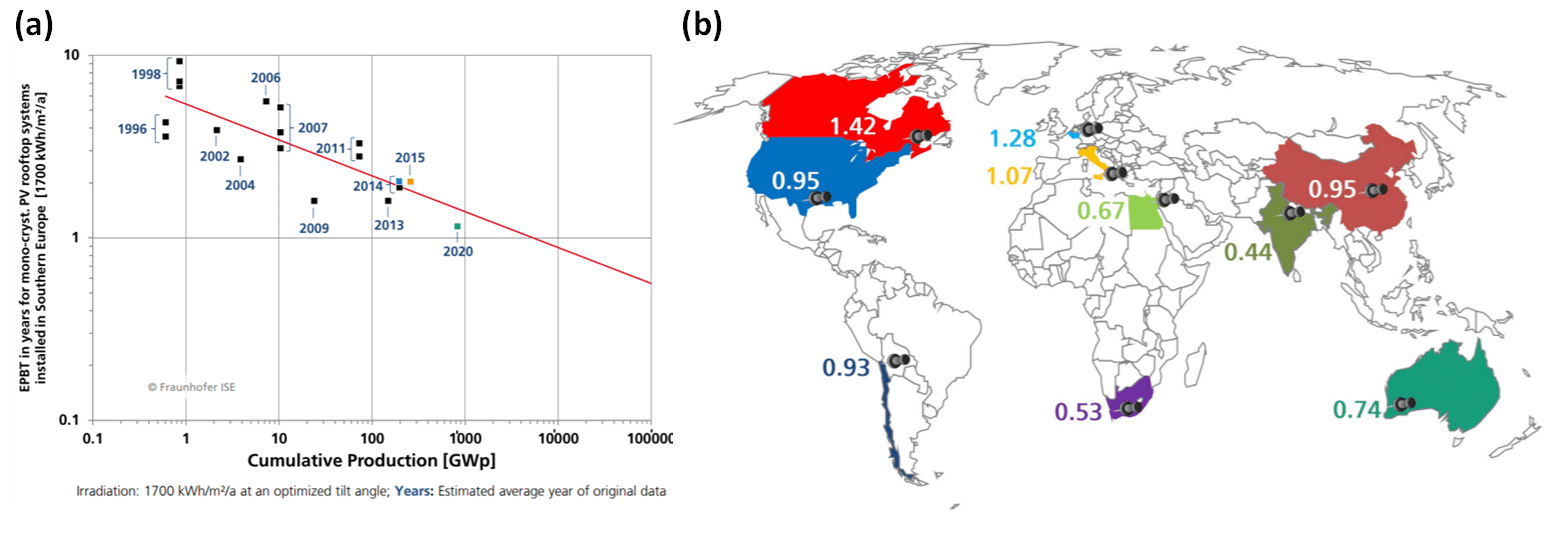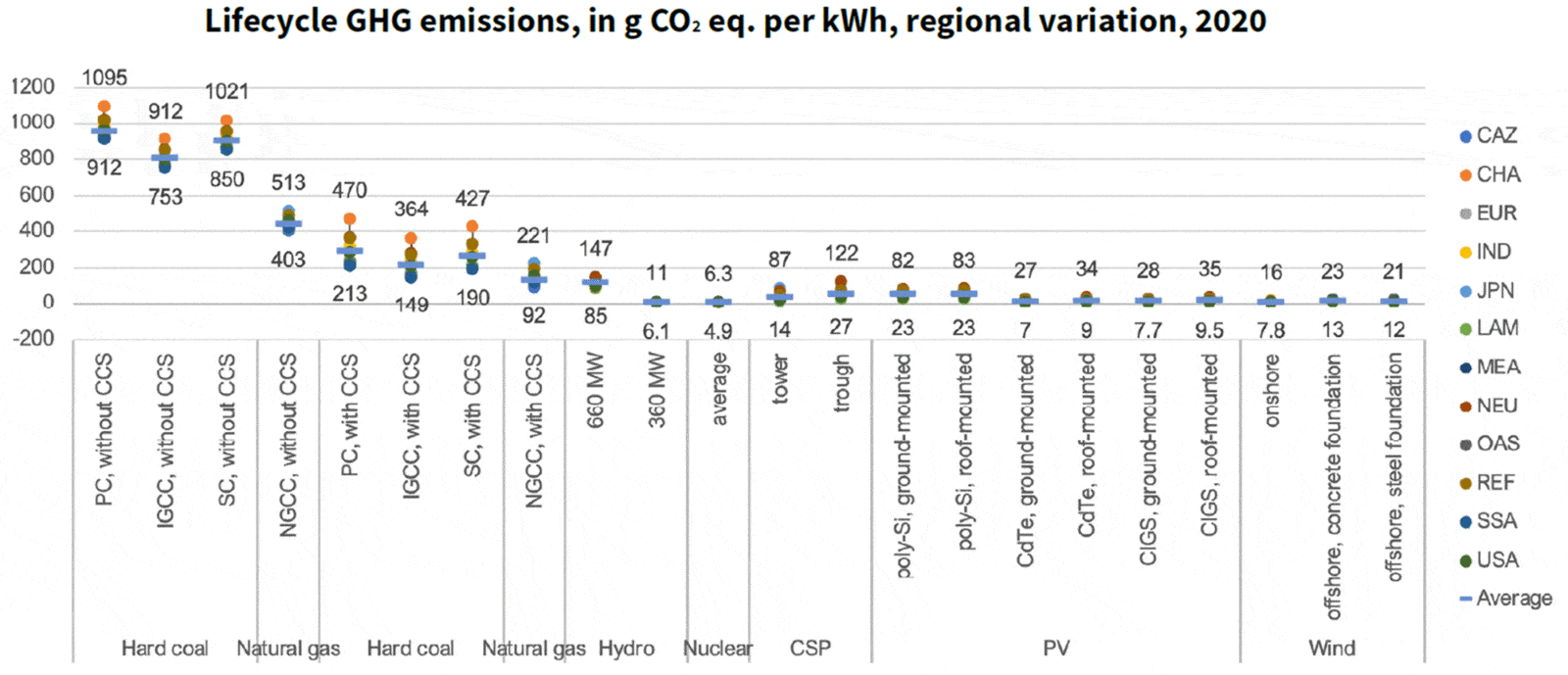Expert Talk: The Sustainability of Photovoltaic Solar Energy: an overview
It is a well-known fact that photovoltaic (PV) solar energy is set to become the new king of global power markets. This is a strong statement backed by the International Energy Agency (IEA), based on PV expansion currently being at its fastest pace in two decades, with an even much faster pace projected in the coming years [1]. The low cost of PV solar energy is explicitly noted as driving the global demand for renewables. In fact, PV solar is currently cheaper than any power source ever before.
However, it is not well known how sustainable PV energy production actually is, which is therefore assessed in this article.
Written by Bart Vermang, professor at EnergyVille/UHasselt/imec and Ivan Gordon, Manager Photovoltaic Technology and Energy Systems at Energyville/imec.
Energy Payback Time (EPBT)
Currently, PV energy delivers a strong return on energy invested in a very environmentally friendly way. At the end of 2020, the total cumulative PV installations worldwide amounted to more than 700 GWp[1], of which between 135 and 150 GWp was installed in the year 2020 itself [2]. It has been demonstrated that these PV modules deliver much more energy than needed for their production and are one of the greenest electricity generating technologies.
- PV systems typically need around 1 year to balance the input energy, which means that they can produce at least twenty times the energy needed to produce them (i.e., assuming – only! – 20 years lifespan which is the minimum lifetime guaranteed by installers nowadays). The Energy Payback Time (EPBT) is the amount of time it takes for an energy system to generate the amount of energy equivalent to the amount it took to produce the system. Fig. 1(a) provides a historic trend for the EPBT of silicon-based PV rooftop systems, showing that each time the cumulative production doubled, the EPBT went down by more than 12.5 % during the last 24 years. Fig. 1(b) even demonstrates a world map for the EPBT of PV systems, showing that it is dependent on local irradiation (i.e., the more sunlight, the shorter the energy payback time), but also on other factors like grid efficiency (being better in Europe). All these EPBT’s are already close to 1 year, which will reduce further in the coming years (see Fig. 1b) [2].

Broeikasgasemissies
- PV systems display very low greenhouse Gas (GHG) emissions over their full life cycle, and PV is therefore one of the most environmentally friendly electricity generating technologies. The environmental evaluation of energy technologies is carried out using life cycle assessments (LCA), which take into account all flows of materials and energy, waste, and emissions, along the whole lifecycle of the technology (i.e., from extraction of raw materials to end-of-life treatments such as recycling). Fig. 2 gives an overview for all electricity generating technologies using a functional unit, i.e., the delivery of 1 kWh of electricity to a grid, on a global average. It shows that PV exhibits one of the lowest lifecycle GHG emissions of all technologies, with best PV technologies showing emissions in the range of 10 to 20 g CO2 eq./kWh [3]. These emissions will further reduce strongly in the coming years since this is currently one of the focus points of PV research and development.

Integration in the urban environment, recyclability, resources and local production
As already said, PV energy is geared up for immense growth in the coming decades, which can only be enabled in a sustainable manner thanks to constant innovation. Solar PV has been generally identified as the most important renewable energy technology for cost optimized climate change mitigation. It is estimated that it will require installing a total of 20 to 80 TWp[2] of PV until 2050 and 80 to 170 TWp until 2100 to remain compatible with limiting climate change to 1.5 °C [4]. Such huge numbers are going to challenge various LCA impact categories. We will briefly discuss the critical ones: Integration, land use planning, recyclability, use of resources and local production. Rationally, all these are examined at EnergyVille.
- Since land area is scarce and there will be a huge growth of PV installations, PV systems need to become seamlessly integrated in the urban environment and need to obtain dual functions (electricity generation plus other function). As an example, traditional ground mounted solar installations on farmland need to be avoided, since arable land is then removed from potential agricultural use. Instead, integration and dual (land) use are optimized via the development of agricultural (agri), building-integrated (BI), floating (F) and infrastructure-integrated (II) PV systems.
- Recycling needs to be increased from the current 85% to 100%. The EU Waste Electrical and Electronic Equipment directive addresses the waste management of all electronics in the EU, and currently requires 85%/80% (recovery/recycling rate) of waste PV modules by mass to be recycled. Hence most PV modules are not yet designed for full circularity (i.e., easy to disassemble, repair, refurbish and recycle). Very recently, several initiatives are already claiming 100% recyclability (e.g., Solarge in the Netherlands). Another important aspect is to expand the lifetime of PV modules, which is always favourable from an environmental perspective [5].
- All resources need to be reconsidered at TW-scale. Based on the current technology, a giant PV industry would be running into resource constraints concerning e.g. energy, float-glass, capital investments, silver, indium, and bismuth. It has been shown that continued technological learning at current rates would be sufficient to stay within reasonable resource boundaries. Even more, technological solutions enabling such learning are foreseeable. These technology improvements are expected to bring the greenhouse gas emissions for PV in the range of 5 g CO2 eq./kWh [4,6], in line with values for nuclear energy.
- Production needs to come back to Europe. The projected growth facilitates scaling up the European solar PV industry value chain to capture booming local demand. In 2020, around 20 GWp was installed in Europe, and a strongly growing European market is estimated for the next decade. At the same time, European companies and research centres have been developing world-leading cell and module technologies, as well as applications for buildings, water, and agricultural land. The European Solar Initiative sets the goal of redeveloping 20 GWp of PV manufacturing in Europe by 2025 [7].
Footnote
[1] GWp staat voor Gigawattpiek. Eén Wattpiek komt overeen met de productie van een elektrisch vermogen van 1 Watt door een zonnepaneel bij standaardtemperatuur en -zonlicht. 1 GWp = 109 Wp
[2] 1 TWp = 1 Terawattpiek = 1012 Wp
References
- https://www.iea.org/reports/world-energy-outlook-2020
- https://www.ise.fraunhofer.de/content/dam/ise/de/documents/publications…
- https://unece.org/sites/default/files/2021-10/LCA-2.pdf
- https://pubs.rsc.org/en/content/articlelanding/2021/ee/d1ee02497c
- N. Rajagopalan, A. Smeets, K. Peeters, S. De Regel, T. Rommens, K. Wang, P. Stolz, R. Frischknecht, G. Heath, D. Ravikumar. 2021. Preliminary Environmental and Financial Viability Analysis of Circular Economy Scenarios for Satisfying PV System Service Lifetime. International Energy Agency (IEA) PVPS Task 12, Report T12-21:2021. ISBN 978-3-907281- 23-9.
- https://www.sciencedirect.com/science/article/pii/S2542435120300507
- https://europeansolarinitiative.eu/
